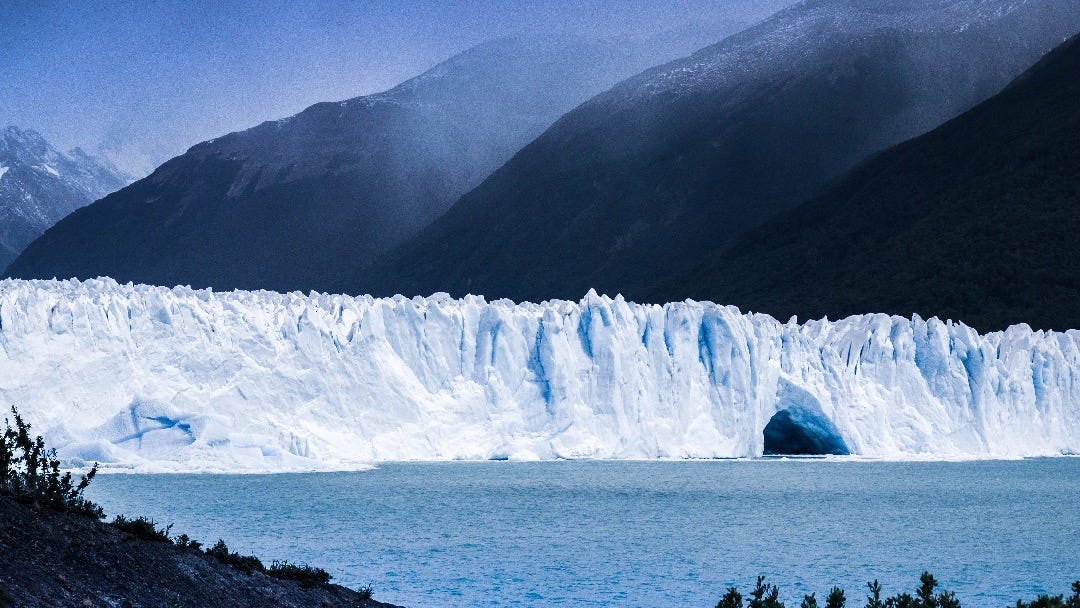This year, the predictions for maximum sea-level rise nearly doubled
The extreme scenario for sea-level rise in 2100 went up from 1.1 meters to 1.35, and then to 2 meters.
Several times this year, predictions about sea-level rise made headlines, and, unfortunately, the bad news is that the trend in new forecasts is going upwards. Coming from the Netherlands, where a large part of my country is below sea level, I find these reports frightening.
If you are not a regular reader of this newsletter (you should): I started the review of 2021 already 52 days before the end of this year, which gives me every day to cover one week. We have just arrived in week 5, so join us, and you still have 47 days of brand new history to enjoy.
From 1.1 meters to 1.35
In the first week of February this year, we learned that the rise in the sea level is likely to be faster and higher than previously thought, according to researchers who found that recent predictions are inconsistent with historical data. Until this research from the Niels Bohr Institute in Copenhagen, we relied on the (then) latest assessment of the IPCC that predicted that the sea level was unlikely to rise beyond 1.1 meters (that is 3.6 feet) by the end of this century.
But in week five of this year, the latest research said that the worst-case warming scenario could raise sea levels to 1.35 meters by 2100. This finding was published in the Journal of Ocean Science by scientists who had used historical data on the sea-level rise to validate various models relied on by the IPCC to make its assessment. They found that the IPCC models were not sensitive enough and found a discrepancy of about 25cm; they added in their report that some experts assign a substantially higher likelihood of such a 1.35-meter future.
From 1.35 meters to 2 meters
Let's move fast forward through the most recent history and move from week five of this year to week 32 when the IPCC released the first part of its Sixth Assessment Report. It summarizes the conclusions of 234 international scientists on the current climate research on how the Earth is changing as temperatures rise and what those changes will mean for the future. They conclude, for instance, that the evidence for accelerating ice sheet loss has become more evident; this factor is primarily responsible for the increase in the rate of sea-level rise since the 1990s. The other aspect is the expansion of ocean water when it gets warmer.
A new finding is that under the most extreme IPCC emissions scenario, the scientists could not rule out rapid ice sheet loss leading to sea level rise approaching 2 meters (7 feet) by the end of this century. So in just the first eight months of this year, the extreme scenario for sea-level rise went up from 1.1 meters to 2 meters. A level above which it gets incredibly challenging to keep our feet dry in the Netherlands. Due to deep uncertainty in ice sheet processes, the IPCC report could not rule out a seal level of 5 m by 2150 under a very high greenhouse gas emissions scenario.
Think for a moment about all the world's deltas that don't have the finances, governance, and know-how to defend their countries against even much lower levels of sea-level rise. Think for a moment about some of the biggest cities that you know in the world, and then check if they are inland or on the coast (do it, see what I mean?). Think for a moment about the farmers in the deltas of Bangladesh or Vietnam. Or imagine what even a more moderate, and more likely, sea-level rise will mean for the future for the inhabitants of Jakarta, Bangkok, or Alexandria.
What can you do?
It doesn't have to be that way; this is the extreme scenario. There are quite a few things that climate scientists don't know yet, but the main thing that they can't predict is what our leaders will do. Will they take action in time? Will they do better next year in Egypt than they did at COP 26?
If they finally take the brave decisions that we want them to take and limit warming to 1.5 C, or at least well below 2 C, it should take many centuries for sea-level rise to exceed 2 meters. That is not ideal, but at least a far more manageable situation.
What can you do? Vote for leaders who fight climate change and dare to take strict measures now to avoid much harsher conditions in the decades to come. Oh, and while I'm at it: fly less and eat less meat, the animals will also love you for it.
My week 5 in photos
A lockdown and lots of snow kept me mostly inside. And so did Luna, who read the same reports as I did and already found some higher ground. She loves this spot in winter, which is likely just a little warmer than on the floor.
With a beautiful sunset and frozen waterfalls, I enjoyed walking to this spot not far from home in Ottawa.
Please don’t leave yet and read this too. Writing this newsletter is a lot of work, but I do believe in spreading the message that together we can do better on this beautiful but fragile planet.
This newsletter is an independent production and really needs your support.
If the cost of this newsletter ($6/month, $60/year) would create any financial strain, please stay on the free list; I value all readers.
Notes:
https://os.copernicus.org/articles/17/181/2021/
https://www.ipcc.ch/assessment-report/ar6/
first photo: by Kristina Gain from Pexels







Amidst the turbulent weather and earth conditions worldwide, it’s appalling that so many people refuse to see OUR climate crisis. Looks like Luna is among the wise and taking action for her best and safest life. These photos are beautiful.
Just saw pictures of floods in Portland, ME and it wasn’t caused by rain but rising sea levels. So far on LI it is caused by storms. Speaking of storms LI saw 4 tornadoes this week. Extremely unusual and even more because it happened in November. Seems everywhere is being impacted by climate change and more people here are realizing climate change is not a fallacy.
Lovely picture of Luna. Cats like comfort and warmth and luckily we can provide that. Thanks for the photos and another article to ponder.